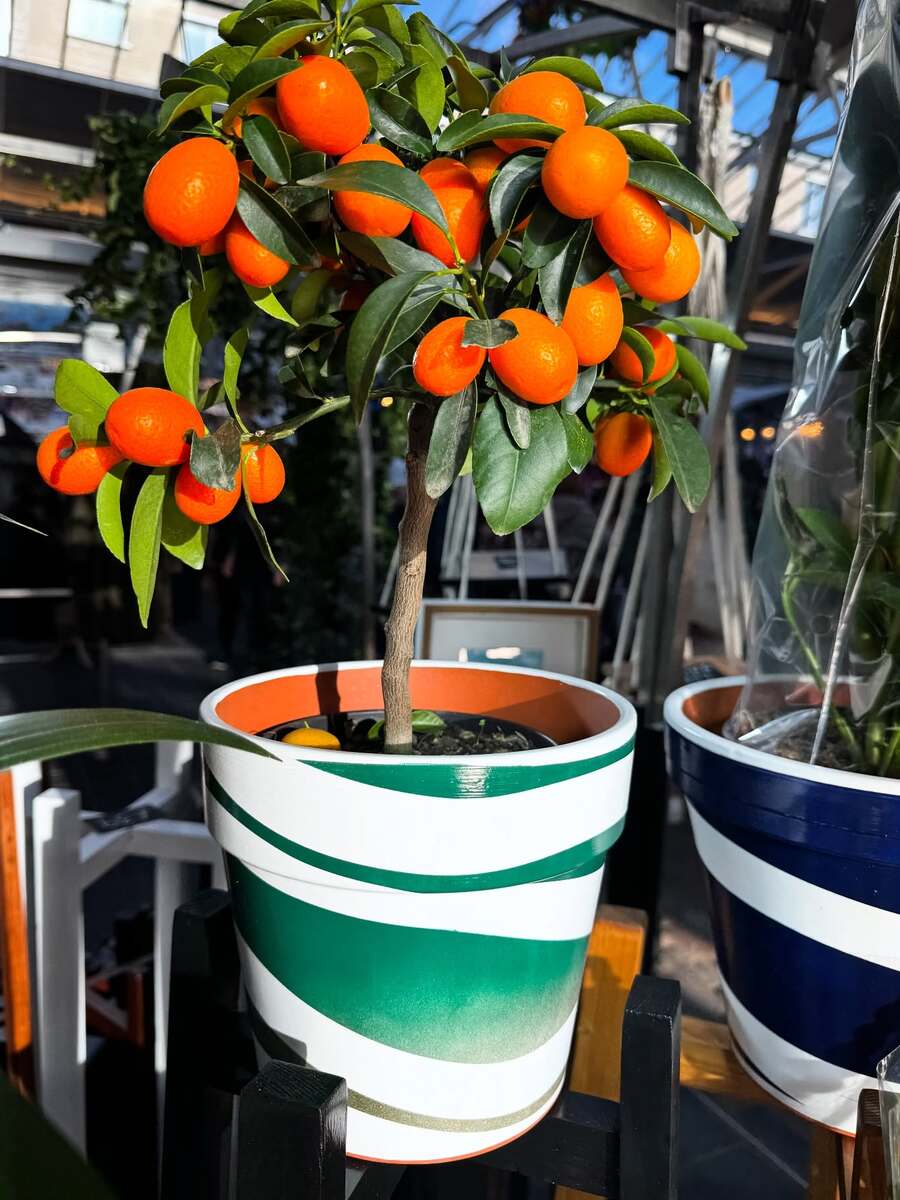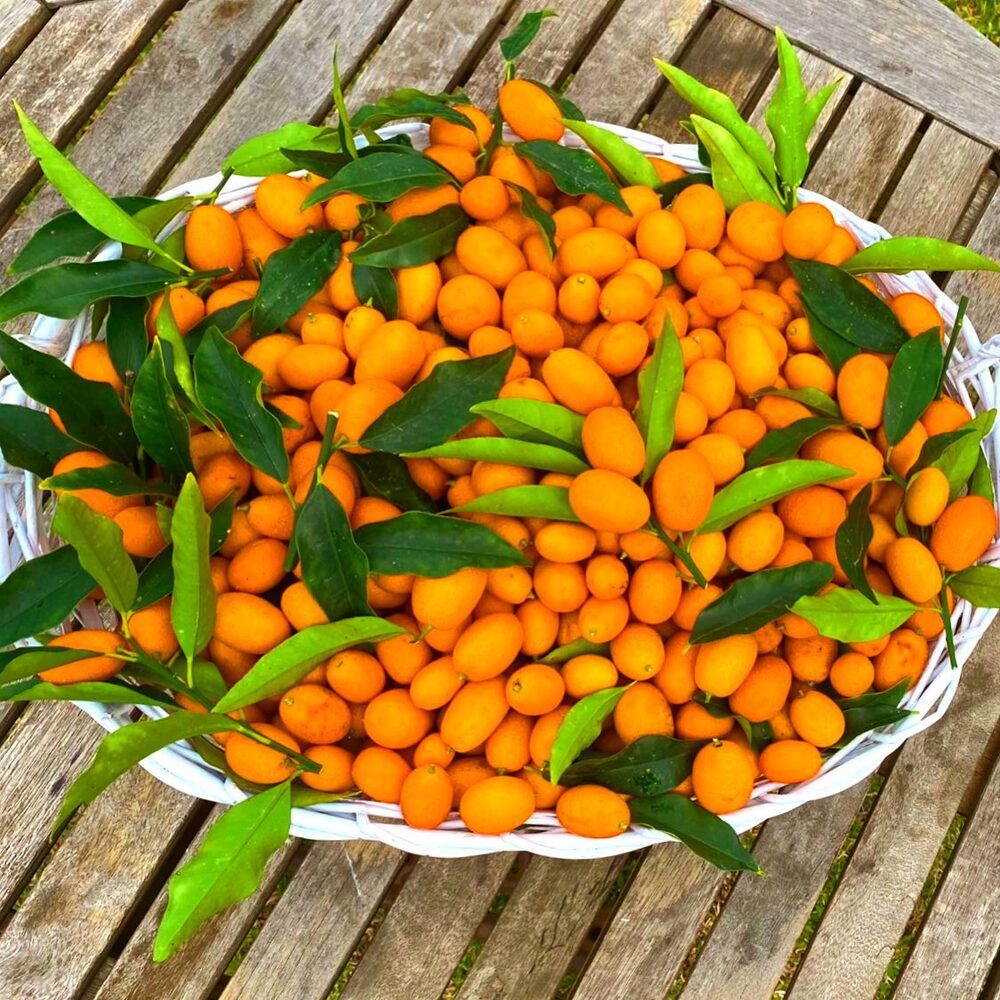Containing a great dose of Vitamin C, plus a rich, tangy citrus flavor, fruits from the kumquat tree will rapidly become one of your favorites. You're probably thinking, "What in the world is a kumquat tree, and how have I never heard of it?" This will be a dose of fresh kumquat news on how you can grow, care for, and even eat this magnificent fruit!
Kumquat Biology and Nutrition - Fast Facts
Kumquats are a group of small fruit-bearing trees in the flowering plant family Rutaceae. The kumquat tree, also known as Citrus japonica, is an easy-to-grow fruit tree. Of all the citrus trees, this one is the most beautiful with dark-green, glossy leaves. It’s known for its bright orange fruits, which are deliciously tart and sweet. We also have some interesting facts to share about another exotic citrus fruit - the Buddha's hand - check it out.

Though the citrus fruit resembles an orange color and round shape, it’s actually quite small — about the size of an olive. Depending on the variety, they can appear as early as November and as late as April, but they're at their best in December and January. Want to know more? We've got you covered.
The Origin of Kumquat Trees
A kumquat is an edible, orange-like fruit that is native to Southeast Asia. The English name 'kumquat' comes from a Cantonese word that means golden orange or golden tangerine. As for the date of cultivation of the fruit, there's no exact date, but the earliest known reference appeared in China during the 12th century.
Though it has been a staple for centuries in Southeast Asian countries like China, Japan, India, and Taiwan, the kumquat wasn’t brought to Europe until the mid-1800s. By 1850, it was being cultivated in North America and is now cultivated widely in Florida and California.

How to Plant and Grow a Kumquat Tree
Pick a location with plenty of sun exposure and sufficient soil drainage. The kumquat's development and fruit production may be hampered if surrounding taller trees shade it out. Additionally, the area needs to be shielded from severe winds. Container growth is a fantastic choice if your garden plot is limited, and kumquats can also be cultivated indoors where light is sufficient, perfect for anyone creating an indoor edible garden.
Taking into account the support, depth, and spacing when planting kumquat trees is also important. Typically, kumquats are planted as young nursery trees. When planting, be sure to leave a kumquat tree at least 5 to 6 feet of space. It should be inserted into a hole that is three to five times wider and around the same depth as the root ball. Typically, no support structure will be required.

Checklist on Year-Round Kumquat Tree Care
First and most importantly, you will need a very large container to plant your kumquat because these flowering plants can't stand being root-bound. Pay close attention to these care instructions in order to have an incredibly fruity kumquat tree!
Light
Kumquat trees need full sun and do best with at least six to eight hours of direct sunlight on most days. When grown indoors, place your tree by your brightest window or set it under grow lights. For extra inspiration, check these fragrant indoor citrus-care tips.
A kumquat will survive in bright, indirect sun, but it won't be as productive. Remember, full sun is how a kumquat likes it!
Water
The kumquat tree wants soil that is consistently moist but not damp. You'll notice it's probably time to water it if you stick your finger in the soil up to your second knuckle and it feels dry at the tip. To keep the soil moist, spread a 5-8 cm (2 to 3 inch) layer of mulch over the tree's root zone. Just be sure to keep the mulch at least 8 cms (3 inches) away from the tree trunk because moisture retention on the trunk can lead to illnesses, decay, and can serve as a pathway for pest damage from insects.

Soil
Kumquat trees prefer loamy, moist, well-draining soils with a slightly acidic to neutral soil pH. Don't plant them in heavy clay soils, as this can cause root rot. To prevent soil from leaking out, drill extra-large drainage holes at the bottom of the pot and seal them with window screens. Lift the pot above the ground to enhance airflow and drainage. You can also use a raised base or a terracotta pot for smooth airflow.
Fertilizer
After planting your kumquat tree, make sure to wait about two to three months before fertilizing. Then, use a citrus fertilizer following the label instructions. Important: Do not fertilize during the winter season.
How Should You Prune These Trees?
Cut away any plant suckers (vigorous vertical growth originating from the root system or lower main stem of a plant) sprouting below the graft bud, as they won't produce fruit. When the tree is very small, pinching off the tips of the shoots will encourage it to branch out. If you want to prune the tree for shaping, do this after the fruit has been harvested but before flowers appear the following spring.
Uses of Kumquat
Kumquats earn their keep indoors or out - they're ornamental, edible, and undeniably charming. They also pair well with other festive flora: think marigolds and kumquats in bright arrangements. Beyond gardening, kumquat branches make adorable good-luck gifts, joining the roster of lucky plant favorites.

Kumquat Fruit Flavor Profile and Culinary Potential
Kumquats are commonly enjoyed raw and eaten whole as a sweet-tart snack. They can appear as part of a holiday spread (see this joyful floral tablescape for inspiration), providing decoration for the table and a fruity palate cleanser. The fruit is also frequently sliced or left whole and candied for a tasty addition to desserts or drinks. Similar to oranges, kumquats can be pureed or juiced. Peeling isn't necessary, but you will need to strain out the little seeds.
What Do Kumquats Taste Like?
Kumquats taste somewhat like oranges. Their delicate peel is sweet rather than bitter, and the flesh has a sharp, tart, and sour flavor. A juicy, sensitive inside may be found underneath the soft, slightly chewy exterior. Depending on the fruit's ripeness and variety, the tartness level fluctuates.

The Decorative Magnificence of Kumquat Trees
You will certainly fall in love with how tidy this plant is – the waxy green leaves and the small, plump, oval-shaped fruit. The Kumquat is used widely in Christmas decor and also during the Chinese New Year. The Kumquat takes the houseplant effect a few steps further – the pop of orange is so pretty and unexpected. If you adore bold botanical statements, consider teaming them with other tall indoor trees.
Popular Kumquat Cultivars (Nagami, Meiwa, and More)
Some popular kumquat varieties include:
-
Citrus japonica 'Nagami' is the most popular type of kumquat. The deep orange fruit is oval in shape and has two to five seeds.
-
Citrus japonica 'Meiwa' is larger than 'Nagami', has sweeter pulp and juice, and is nearly seedless.
-
Citrus japonica 'Marumi' has small, round, very juicy fruit with a thick yellow-orange rind.
-
Citrus japonica 'Centennial Variegated' is a compact kumquat variety that grows 2 to 3 meters (7 to 10 feet) tall. It has variegated white and green foliage, and the fruit is streaked with orange and red when ripe.

Common Pests Found in Kumquat Trees
Kumquats are susceptible to root rot diseases in poorly drained soil and areas prone to flooding. You can prevent this by selecting a planting site with good drainage and not overwatering. For a natural pest deterrent, companion plant aromatic species like citronella nearby.
Are you up to trying kumquat fruit? Get your hands on track and grow one of these beauties at home!





